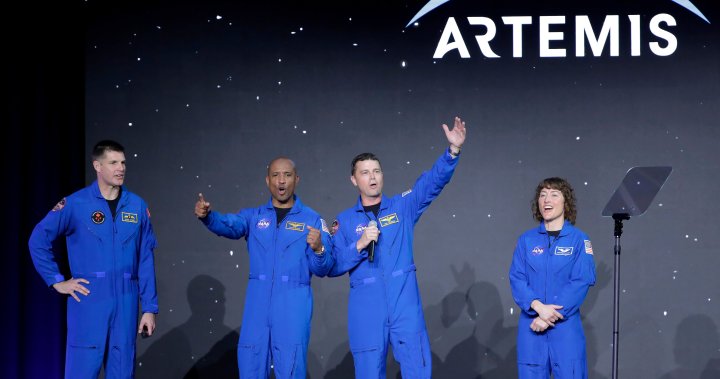A highly anticipated lunar orbit and a return to the moon by humans after more than 50 years are being pushed back.
NASA announced on Tuesday that it will delay the launch of the Artemis II mission that was slated for November 2024 to September 2025 to give more time to prepare, saying safety is the top priority.
“Safety is our top priority, and to give Artemis teams more time to work through the challenges with first-time development, operations and integration, we’re going to give more time on Artemis II and III,” NASA administrator Bill Nelson said Tuesday.
The Artemis II mission would see four astronauts, including Canadian Jeremy Hansen, go around the moon.
The announcement confirms some media reports this week that had said, citing anonymous sources, that NASA was pushing back the Artemis II mission.
The launch of Artemis III — a two-person lunar landing that was planned for late 2025 — will now take place in September 2026, Nelson said.
Get the latest National news.
Sent to your email, every day.
Hansen, of London, Ont., is among the four-person crew selected for the Artemis II mission and will become the only non-American to leave Earth’s orbit when the mission blasts off.
The Canadian government has pledged $1.9 billion toward the cost of the Lunar Gateway space station that is being built as part of the mission, which includes the cost of the Canadian seat on the Artemis II mission as well as a second potential seat on a voyage to the Lunar Gateway in the future.
Astronauts last visited the moon in December 1972, closing out the Apollo program.
Artemis II is “the first crewed flight test on the agency’s path to establishing a long-term scientific and human presence on the lunar surface,” according to NASA.
This builds on the success of Artemis I, an unmanned flight that travelled on a 1.4-million-mile journey beyond the moon, returning to Earth after 25 days in December 2022.
If the Artemis II mission is successful, it will be the first time humans get that close to the moon since the Apollo program more than 50 years ago.
With the Artemis missions, NASA aims to “explore more of the lunar surface than ever before” and establish “the first long-term presence on the moon.”
The end goal is to go to Mars by the late 2030s – but that might also be delayed now.
More to come…
© 2024 Global News, a division of Corus Entertainment Inc.




